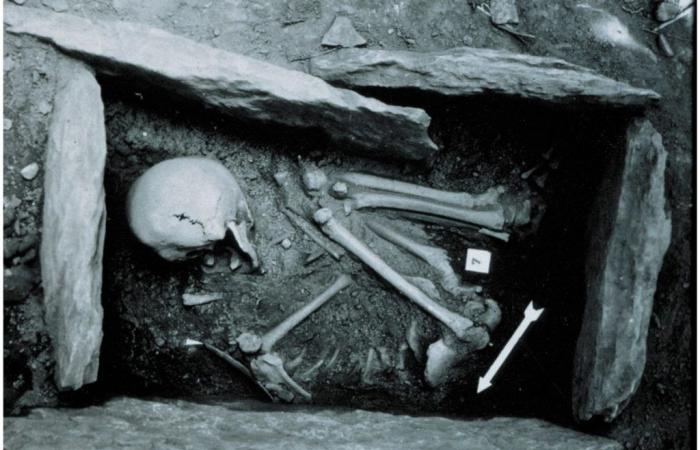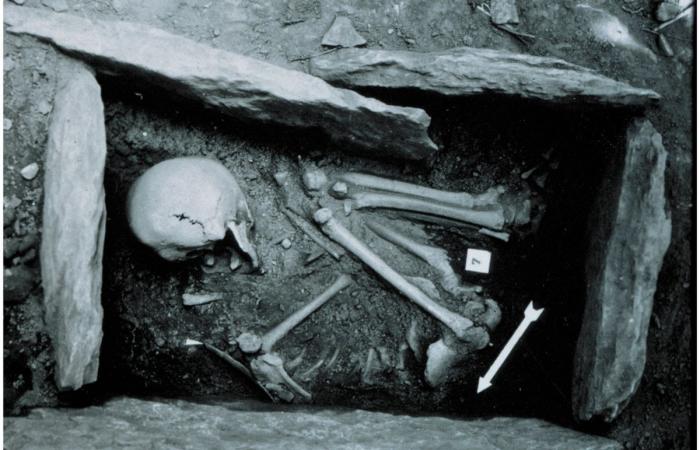– How did our ancestors live 6000 years ago?
An academic from Geneva worked on samples from around fifty bodies found in Valais.
Published: 06/15/2024, 8:59 p.m.
One of the bodies discovered in the Barmaz necropolis.
UNIGE
Subscribe now and enjoy the audio playback feature.
BotTalk
How can we know or become familiar with the customs and morals of our Neolithic ancestors? For example by applying isotopic analysis to human remains from around 6000 years ago. In any case, this is what Déborah Rosselet-Christ, from the University of Geneva, did as part of her university master’s work in prehistoric archaeology.
For these distant times, the isotopes of carbon, nitrogen, sulfur and strontium, in particular, strongly depend on the environment and the environment of each individual. The technique was thus applied to Alpine agropastoral populations from the Middle Neolithic in French-speaking Switzerland.
The Neolithic period is marked by the beginnings of livestock breeding and agriculture. In Switzerland, it is generally placed between 5500 and 2200 years before our era. The transition from predation to a production economy gradually affects communities and their eating habits. At the chemical level, we find traces of it in teeth and bones. The work we are discussing focuses on the Barmaz site, in Collombey-Muraz, in Valais, where a large number of remains have been found.
49 specimens
Déborah Rosselet-Christ’s work includes 49 specimens, as many men as women, from which various samples were taken. Collagen on some bones as well as fragments of enamel from their second molar. Why precisely these parts? “The second molar is a tooth whose crown is formed between the ages of 3 and 8,” explains Déborah Rosselet-Christ. Once formed, enamel is no longer renewed during the rest of life.
Its chemical composition is therefore a reflection of the environment in which its owner lived during his childhood. Strontium, in particular, is a good mobility marker. These chemical elements are found in the enamel via the food chain. For this element, the isotopic analysis revealed a strong homogeneity between all individuals. Fourteen percent of them, however, reveal a different origin.
Jocelyne Desideri, lecturer at the Laboratory of African Archeology and Anthropology at the Faculty of Sciences, adds some nuances to these results: “The technique makes it possible to determine that these are individuals who did not experience the first years of their lives where they were buried, but it is more difficult to determine where they came from. Our results show that people were moving. This is not a surprise, several studies highlight the same phenomenon in other Neolithic places.” Good news, the research will soon be extended to other sites.
“Latest news”
Want to stay on top of the news? “Tribune de Genève” offers you two meetings per day, directly in your email box. So you don’t miss anything that’s happening in your canton, in Switzerland or around the world.To log in
Did you find an error? Please report it to us.
2 comments







